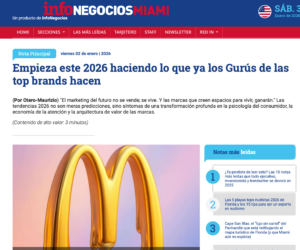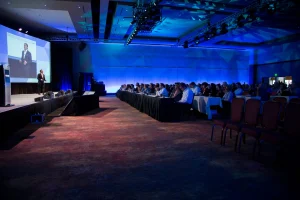Guest post by Ian Greenleigh, author of The Social Media Side Door (Fall 2013) and social strategist with Bazaarvoice. Follow him on Twitter @be3d
Products were once contained by physical ownership and access. To experience a product, you had to buy it or try it. Brands extended beyond the idea of physical products into other types of consumer exposure to companies. Non-customers have always had access to brands outside of the ownership capacity, through advertising, word of mouth, and any other manifestation of a company that didn’t require ownership of their product. But this brand experience lacked depth—you may have seen an ad for something, but without having consumed it as a product, it would be hard to argue that you really experienced it in any meaningful way.
The web and social punched a million holes through this idea. Experience has streamed through these holes and spilled out beyond physical ownership and captive audiences. People want to experience products and brands on their terms, in new ways, and meaningful experiences aren’t reliant anymore on that historically necessary condition: product ownership. Relationships between people and brands have gone from binary and transactional to complex, with a kind of depth once reserved for human relationships. Exhibit A of this shift is the Millennial generation, for which brand preference is the top online personal identifier—more important, in this respect, than religion and ethnicity.
We’re seeing a convergence of identities, brands, and products, and a decentralization and diffusion of the brand experience. It’s everywhere. Consumers watch unboxing videos of other people opening things. They listen to total strangers who know a lot, instead of just their friends and family, who may not. They stand in line for hours to get things first. They use brick-and-mortar stores as their personal showrooms, whether the retailers like it or not. They customize their shoes (and even their candy) online. In all these ways and more, they are interacting with products and brands without—or before—physically owning them, and often, without having paid a penny.
Many brands have embraced this to varying degrees. Consumers, they have realized, are their best marketers. They are the people best equipped to transmit the brand experience to other consumers so that it resonates, instead of being ignored, distrusted, and forgotten. These brands have taken steps to create more things worth experiencing and sharing. They move at the speed of social (or as close as they can get to it), putting out videos, tweeting, blogging, updating their Facebook pages more than a few times a day. Consumers are rewarding the good stuff by passing it along, and in doing so, they pass bits of the brand along with it. Companies and consumers are talking to each other beyond the call centers and points of sale for the first time in history. Real, authentic one-to-one and one-to-many communication is making relationships less transactional, and more like real relationships.
Suddenly, an idea that had applied mostly to commodities and luxury items applies to everyone. That idea? The experience you build around your product is often more important than the physical product itself. People are increasingly buying physical things due to the experiences they associate with them because the experiences that surround—but aren’t contingent on—product ownership are more frequent, accessible, and fulfilling. Consumers can get value, for example, out of reading Kate Spade’s excellent Behind the Curtain blog whether or not they’re shopping for or own any Kate Spade handbags.
Physical ownership no longer has a monopoly on meaningful experience. It’s an extension of that experience, the highest and best version of a brand. The act of purchase is being transformed from one of the only ways to access a product or meaningful brand experience, to the step consumers take to unlock the full or best experience.
Every brand is now in the experience business.
Image Credit: Shutterstock






Interesting arguments. Apple kind of builds an “experience” around their products
Absolutely, they do. When the iPad 2 came out, they did a pop-up store in Austin during SXSW. I was in line, and they had flown specially-chosen Apple Store employees to run around and rile us all up when in line. That’s just one of about 5 million examples of Apple’s mastery of experience…before it was cool.
There are many businesses that have capitalized on the sampling products. For example, Birchbox is a monthly subscription that sends deluxe samples of beauty products. Customers are encouraged to try new products. Birchbox also supplements this subscriptions with online videos of tutorials and reviews. Customers are able to try and experience without the pressure of purchasing a full sized item.
Birchbox is a great example.
Great post Ian. That fact that companies are able to communicate with customers and potential customers in new, public avenues has great potential when used properly. We have already seen a shift from features to experience, particularly in the tech/gadget space. Social and mobile are just putting more power in the hands of consumers to experience the product without owning it.
Looking forward to reading more.
I truly enjoyed this post. With so many brands around us each day, they are beginning to have to separate themselves. I loved the way you described this process. I believe this focus on experience is the natural flow after our focus on producing the service or product. We have seen a trend toward experiential marketing and interactions from vacations to everyday interactions with products. We desire to interact with the products we encounter and to truly be wowed by the experience of them. Companies are beginning to understand this and create these experiences that will then be more likely to be shared about through social media. One example I think of is Coke with the World of Coke as well as their Coke Freestyle machines creating a unique experience for the users.
Taylor, Coke Freestyle is a perfect example, yes. But Coke is a commodity, which means they have had to think like this for a while to differentiate their carbonated sugar water vs. that of their competition. I meant to convey the fact that this kind of thinking is moving beyond commodities and luxury brands, to other types of products, services, and beyond.
Good post Brian. I agree with a lot of what you wrote and can definitely say I have watched plenty of videos of people unboxing something that I was looking to buy. Brands are providing experiences these days. In my social media marketing class here at UGA we had an Apple representative come talk to us. He stressed the concept of the “Apple experience” and how people keep their boxes because of the quality put into them. When you open an Apple box, all the cords are hidden, the product is presented beautifully and simply right there, etc. I agree that the experience can be more important than the actual product. Very interesting concept.
HI Steffan, Apple is normally an outlier for stuff like this, but I mentioned them in the post because they truly understand experience–and they were thinking in this way before it was “cool” to do so.
Agree every brand is in the experience business, this perhaps is the strongest advantage brick and mortar stores have over their e-commerce counterpart, it will be interesting how online businesses will evolve in order to create the much needed experience- (this of course is outside online reviews)…
Customers value the experience of the brand more than anything else these days, gone are the days when the best quality product/service got attention from masses and lead to sales, this time the consumers are empowered with information like never before and only their satisfaction can lead to growth of the business owner, This post stresses on customer satisfaction – a practice described as core value at Synechron.
An interesting post, with a lot of valid arguments.
However, regardless of the online experience for the customer and how it reinforces their loyalty to whatever brand in question, if the eventual physical artefact does not live up to that experience, the brand will still ultimately suffer. There is too much cognitive dissonance if the experience and branding do not equate to the finished product.
Value always has to be rooted with something physical. Even Social Media network need portable devices or computers to convey their experience, and using a shoddy bit of hardware (or indeed software) can still damage their brands.
If you look at the world as a whole, you can see that what we still ultimately attach monetary worth to is the physical commodities, whether it be minerals or housing. Ultimately, things still boil down to physical ownership, even in a virtual era such as this one.
It’s also important to think
about this from a business perspective. You have more competition because
consumers have the ability to see/experience their products through the web and
social media. Also, you need to need develop ways to build relationships and
make your brand stand out from the others. This takes a lot of creativity.
Easily, the article is actually the best topic on this registry related issue. I fit in with your conclusions and will eagerly look forward to your next updates. Just saying thanks will not just be sufficient, for the fantastic lucidity in your writing. I will instantly grab your rss feed to stay informed of any updates.